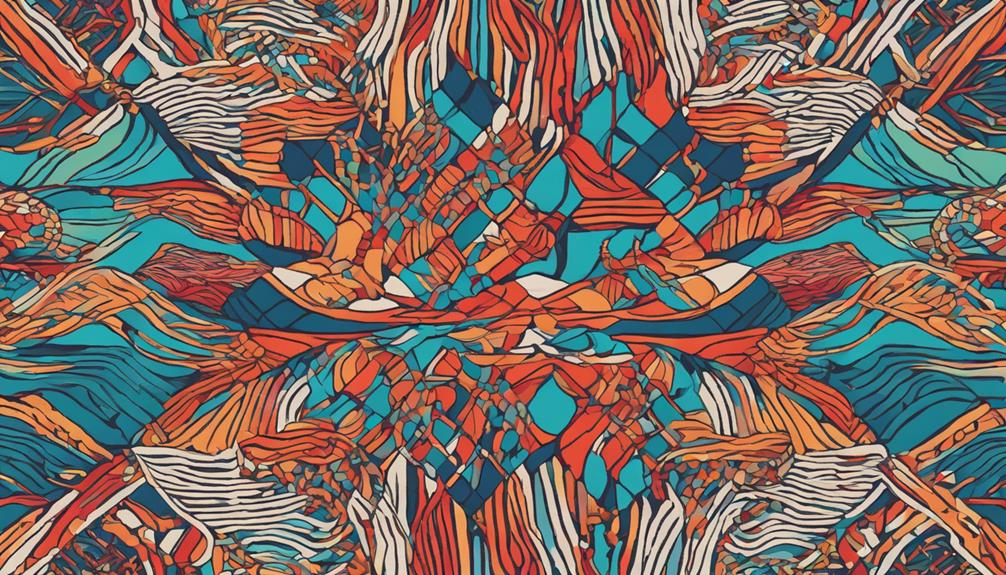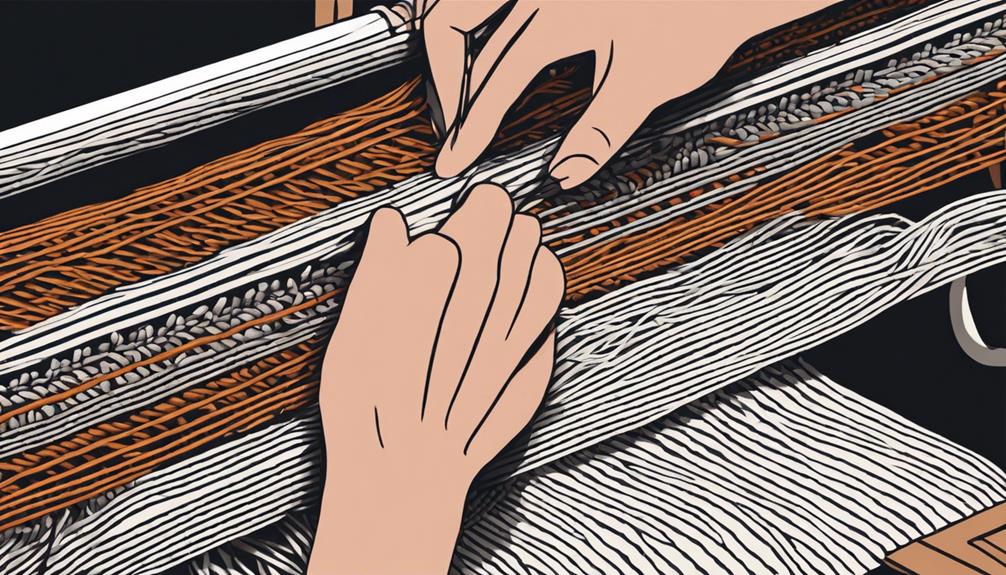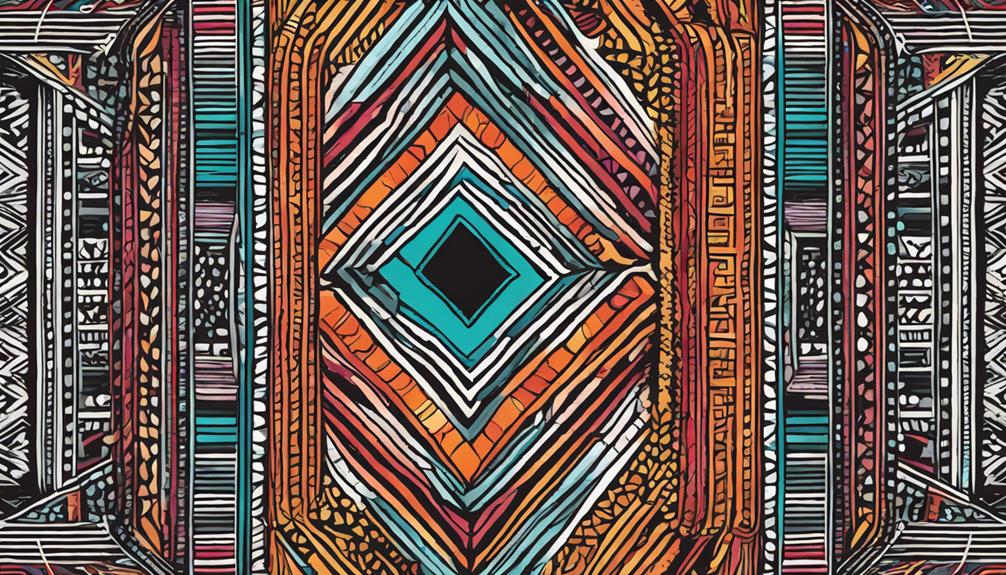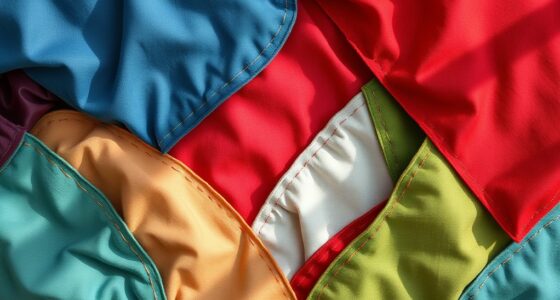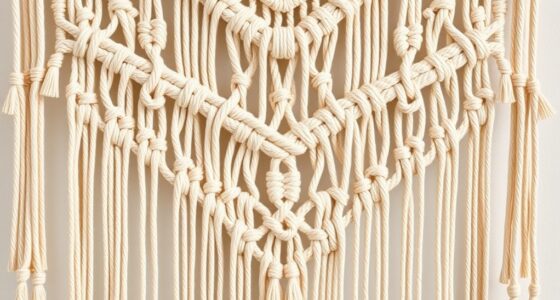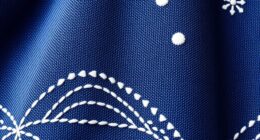Discover the central themes of textile art as a merging of history, cultural importance, and creative advancement. From ancient practices like dyeing and weaving to modern interpretations by respected artists, textile art weaves together tales, symbolism, and ingenuity. Dive deeper for a thorough comprehension of how textiles reflect societal values, fuse tradition with modern narratives, and serve as a platform for elaborate artistic expressions. Engage in the exceptional blend of skill, cultural legacy, and varied techniques that render textile art a compelling mode of visual and tactile storytelling. Embark on an exploration of the realm of textile art to cultivate a greater admiration for its intricate beauty and cultural depth.
Key Takeaways
- Blend cultural heritage with contemporary innovation.
- Express cultural identity through diverse techniques.
- Utilize materials like cloth, yarn, and fiber.
- Serve as a storytelling medium through ancient methods.
- Reflect societal norms and values in artistic creations.
Historical Evolution of Textile Art
The historical development of textile art traces back to 500 BCE, showcasing a shift from practical to decorative purposes. Ancient techniques such as dyeing, weaving, embroidery, knitting, and crochet have paved the way for the contemporary textile art we see today.
Throughout history, technological advancements like the invention of the loom and mechanization in the 18th century have revolutionized textile production methods, allowing for more intricate and diverse creations.
Moreover, the history of textile art offers a glimpse into cultural influences and historical craft skills prevalent during different eras. It serves as a reflection of societal norms, traditions, and values, capturing the essence of various civilizations.
Artistic movements have also played a significant role in shaping the evolution of textile art, with each era leaving its unique mark on the craft. These influences have contributed to the rich tapestry of styles and techniques seen in textile art today.
Significance and Symbolism in Textile Art
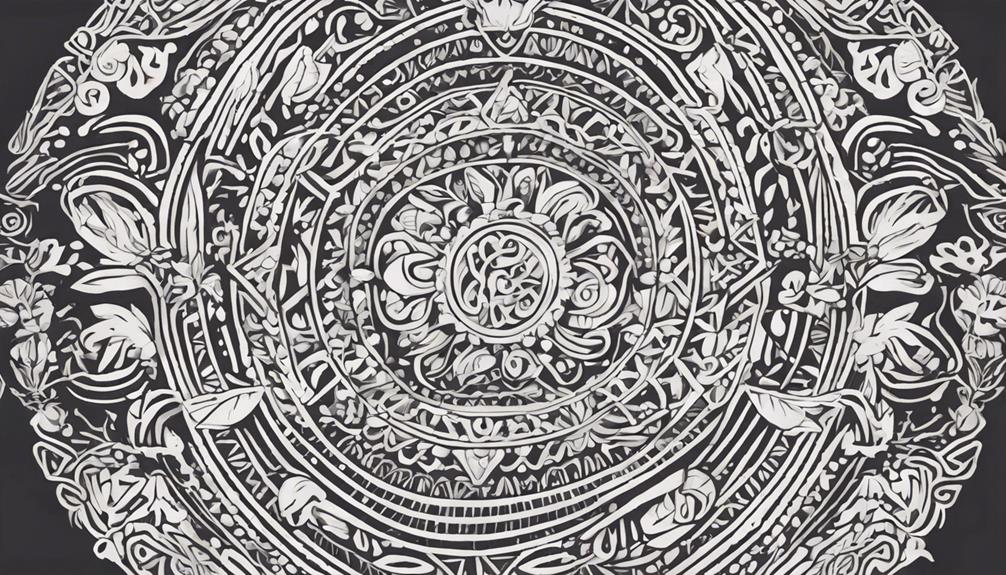
Exploring the intricate layers of significance and symbolism woven into textile art reveals a rich tapestry of cultural narratives and personal expressions. Symbolic meanings in textile art often reflect historical events, social values, and personal expressions, adding depth to the artwork. Throughout history, textiles have been used to display power, status, and religious symbolism, symbolizing authority and spiritual significance. Artists such as Faith Ringgold and Hannah Ryggen have utilized textile art to address political and social issues, infusing their creations with powerful messages. Textile art continues to evolve as a form of contemporary storytelling, blending ancient techniques with modern narratives to convey diverse cultural influences and societal themes.
| Significance and Symbolism in Textile Art | |
|---|---|
| Symbolic Meanings | Historical Events |
| Social Values | Personal Expressions |
| Power | Status |
| Religious Symbolism |
Prominent Artworks and Artists
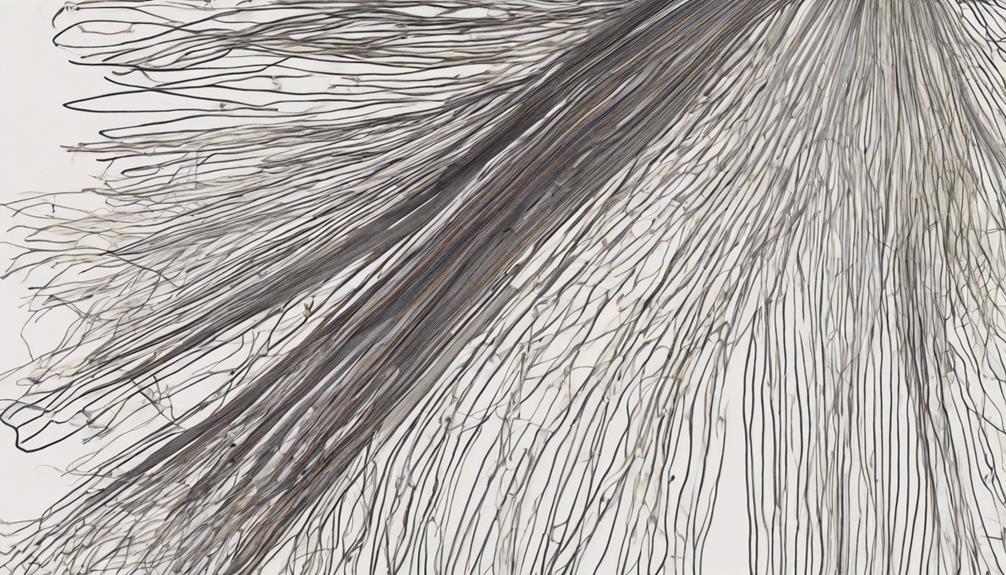
In the world of textile art, a myriad of prominent artworks and artists have mesmerized audiences with their craftsmanship and storytelling prowess. Prominent artworks such as the Bayeux Tapestry, The Unicorn Rests in a Garden, and the Silk Animal Carpet showcase exquisite craftsmanship intertwined with compelling storytelling.
Artists like May Morris, Hannah Ryggen, and Faith Ringgold have utilized textile art to engage with pressing political and social issues, infusing depth and meaning into their creations. The Gees Bend Collective's quilting techniques not only celebrate African heritage and Native American influences but also reflect rich cultural narratives and traditions within their works.
From hand-painted cotton overdresses to the innovative styles of artists like Anni Albers, Christo and Jeanne-Claude, and Mary Lee Bendolph, the diverse range of techniques in textile art continues to evolve, pushing boundaries and enchanting audiences with its visual and tactile appeal.
Innovations in Textile Art Techniques

Numerous modern technologies have revolutionized the aesthetic possibilities in textile art, enabling artists to explore innovative and intricate designs.
Contemporary artists like Toshiko Horiuchi MacAdam and Nick Cave have embraced multimedia integration and unconventional techniques, pushing the boundaries of traditional methods.
The use of synthetic fibers and dyes has transformed textile production, offering a vast array of intense colors and novel opportunities for artists to experiment with.
Textile artists such as Chiharu Shiota and Louise Bourgeois prioritize technical precision and aesthetic value in their creations, challenging the conventional utility of textile art.
By blending ancient methods with modern narratives, today's textile art reflects a fusion of traditional craftsmanship and innovative techniques, creating a dynamic and evolving art form that continues to captivate audiences worldwide.
Embracing these innovations allows artists to express their creativity in new and exciting ways, shaping the future of textile art with each groundbreaking piece they create.
Cultural Influence in Textile Art
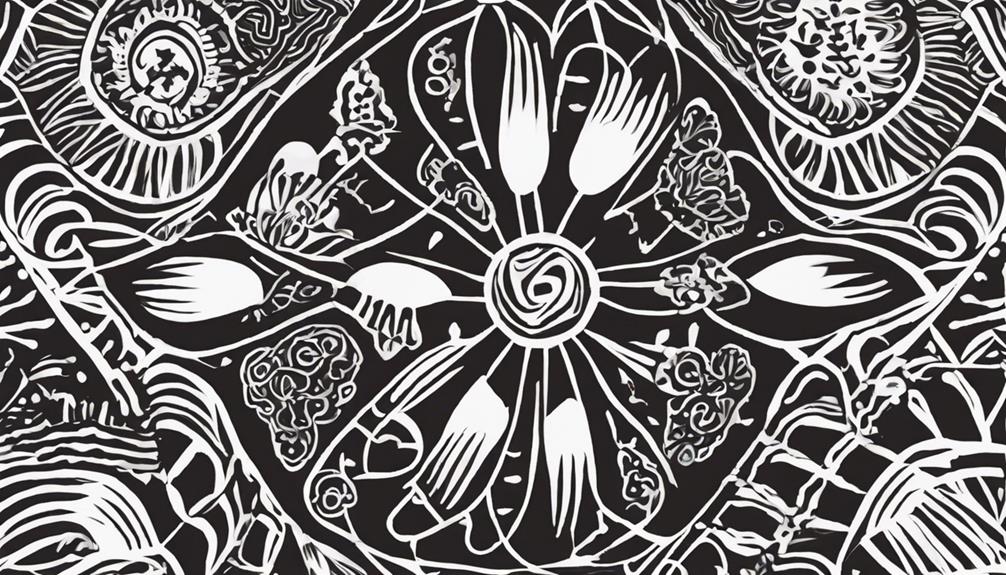
You'll explore how cultural symbolism plays an essential role in the intricate designs of textiles.
Discover how global influences shape textile art, reflecting a blend of traditions and contemporary narratives.
Engage with the rich history of textiles as a form of cultural expression and identity.
Cultural Symbolism in Textiles
Textiles in art serve as powerful channels of cultural symbolism, weaving intricate narratives that reflect the rich tapestry of societal influences.
Through the incorporation of cultural imagery, historical events, and societal values, textile artists communicate a deeper message ingrained in their creations.
Artists like Tanya Aguiña utilize textiles to confront and challenge political issues, embedding profound cultural symbolism within their works.
Traditionally, textile art has been a medium for conveying messages of power, wealth, and social hierarchies, symbolizing status within a community.
Moreover, religious textiles have served as markers of authority and vehicles for spiritual expression, showcasing the pervasive cultural influences within textile art.
In contemporary times, textile art has shifted into a platform for storytelling, blending ancient methods with modern narratives to convey cultural symbolism in a dynamic and engaging manner.
The evolution of textile art continues to highlight the enduring significance of cultural symbolism in artistic expression.
Global Textile Art Influences
Cultural influences play a pivotal role in shaping the global landscape of textile art, infusing diverse traditions and narratives into the fabric of artistic expression. Textile art serves as a powerful medium for reflecting historical events, societal values, and political issues across different cultures.
Artists like Tanya Aguiña leverage textiles to resist and bring attention to contemporary political issues, emphasizing the impact of cultural context on artistic creation.
Throughout history, textiles have been used to convey messages about power, wealth, and social hierarchies, acting as symbols of status and identity within various societies. Additionally, religious textiles have been instrumental in denoting authority and communicating spiritual messages, underscoring the cultural significance embedded in textile art.
In the contemporary art scene, textile art has transformed into a mode of storytelling that blends ancient techniques with modern narratives, showcasing a fusion of cultural influences that resonate with global audiences.
This evolution highlights the enduring relevance of textile art as a medium for expressing and preserving cultural heritage while engaging with current societal discourses.
Specific Textile Art Forms

You can explore the intricate techniques of embroidery, where needle and thread come together to form stunning designs on fabric.
Additionally, quilting offers a canvas for various patterns and styles, creating functional yet artistic pieces like bedspreads and wall hangings.
These specific textile art forms showcase the creativity and skill that artists bring to their craft, adding beauty and depth to the world of textile art.
Embroidery Techniques
Exploring different embroidery techniques offers artists a rich tapestry of creative possibilities in the field of textile art. Embroidery, a craft involving needle and thread to create intricate designs on fabric, allows for unique artistic expression through various stitches like satin, chain, and cross-stitch.
Hand embroidery, known for its attention to detail and craftsmanship, enables artists to produce personalized creations with a high level of skill. This traditional art form is highly versatile, commonly used to embellish clothing, accessories, home decor, and art pieces.
Quilting Patterns
Embroidery techniques showcase intricate designs through needlework, and similarly, quilting patterns involve stitching layers of fabric to create intricate designs and patterns.
Quilting allows for a wide range of creative expression through various stitching techniques, fabric combinations, and color choices. Whether traditional, modern, or innovative, quilting patterns reflect personal style and storytelling, making each quilt a unique piece of art.
Some popular quilting patterns include the geometric Log Cabin design, the elegant Dresden Plate motif, and the romantic Double Wedding Ring pattern. Quilts serve not only as functional items like bedspreads or wall hangings but also as works of art that can be displayed and admired.
The art of quilting merges craftsmanship with creativity, offering a platform for artists to express themselves through the intricate designs and patterns they create.
Additional Textile Techniques

In addition to traditional weaving, various other textile techniques offer creative avenues for artists and crafters to explore.
Diamond painting provides a relaxing outlet where tiny resin rhinestones are meticulously placed on a sticky canvas to form mosaic-like artwork.
Knit Season marks the time when knitting gains popularity in fall and winter for crafting warm, cozy garments, with yarn shops revealing new collections.
Macramé involves intricate knotting of string or rope by hand to create jewelry, homeware, and accessories.
Needle felting, on the other hand, enables the transformation of wool into 3D objects using barbed needles and wool fibers, allowing for detailed textile sculptures and jewelry crafting.
These diverse textile techniques not only showcase the versatility of textile art but also offer artists a range of options to express their creativity through different mediums and methods.
Crafting and Artistic Expressions
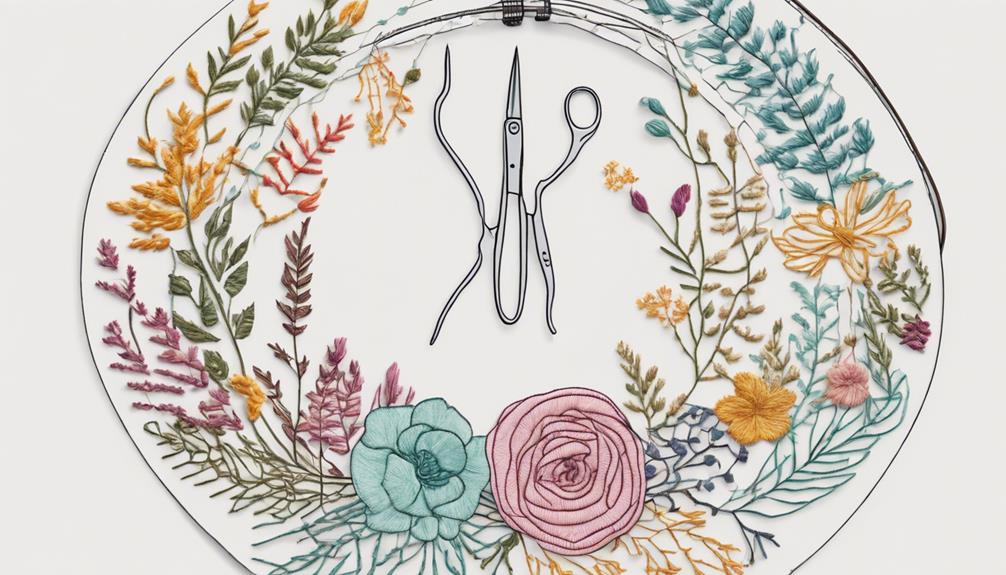
You'll explore the various crafting techniques used in textile art, such as clay, fabric, and paper creations.
These techniques allow for a diverse range of artistic expressions, from personalized gifts to unique character designs.
Crafting in textile art offers a dynamic platform for showcasing creativity and individual style through handmade characters.
Crafting Techniques Overview
Exploring a variety of crafting techniques in textile art provides artists with a diverse range of creative avenues to express their artistic vision. Within the domain of textile art, crafting techniques like embroidery, macramé, needle felting, quilting, and weaving play pivotal roles in shaping the final artwork. These techniques offer unique opportunities for artists to infuse their creations with intricate details and tactile elements.
- Embroidery: Allows for detailed stitching and embellishments on fabric.
- Macramé: Involves knotting various cords to create decorative patterns and textures.
- Needle Felting: Utilizes a barbed needle to interlock wool fibers, creating sculptural designs.
- Quilting: Involves stitching layers of fabric together to form patterns or structures.
Through these crafting techniques, artists can craft anything from delicate embroidered pieces to elaborate woven tapestries, each reflecting the artist's individual style and creative expression.
Artistic Expression Diversity
Crafting diverse characters in textile art involves utilizing a range of techniques such as clay modeling, fabric manipulation, and paper crafting to express unique artistic visions. Artists in textile art showcase their creativity through crafted characters, demonstrating skills in sculpting, sewing, and painting to bring distinctive pieces to life. Handmade characters crafted from materials like clay, fabric, or paper offer personalized and creative gifts inspired by popular culture or original designs. Crafting in textile art allows for a wide range of creative expressions, incorporating different techniques and materials to explore imaginative and personalized creations.
| Techniques | Materials |
|---|---|
| Clay modeling | Fabric |
| Fabric manipulation | Paper |
| Paper crafting |
Textile Art Overview
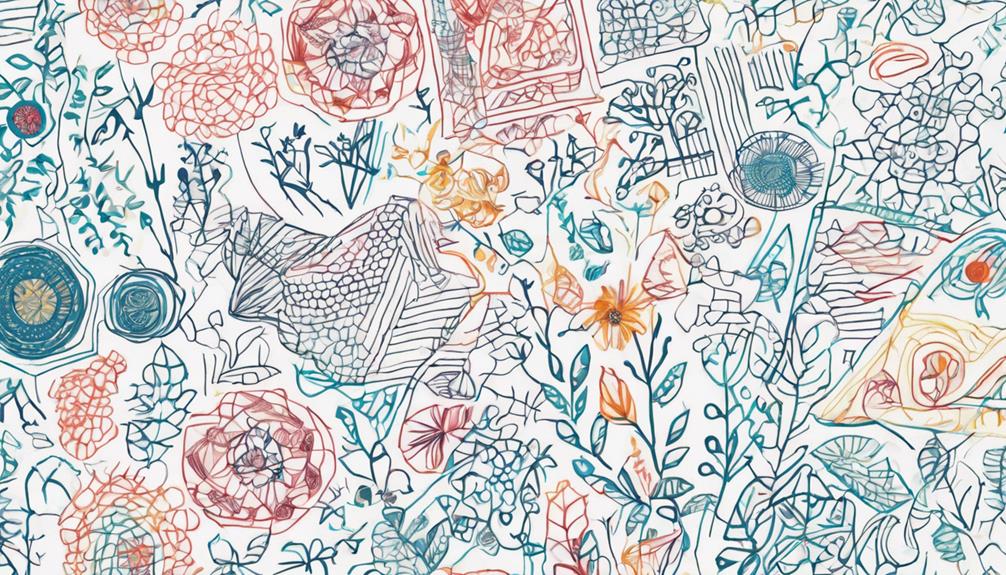
Within the domain of creative expression, textile art encompasses a wide range of techniques and materials, weaving together a rich tapestry of cultural heritage and contemporary innovation.
Textile art includes various forms like fiber art, knitwear, woven fabric, and embroidery. Artists use materials such as cloth, yarn, fiber, thread, and wire fabric to create stunning pieces that showcase a blend of tradition and modernity.
The history of textile art dates back over 10,000 years, evolving from traditional methods like dyeing, weaving, and sewing to more abstract designs influenced by industrial progress.
Today, textile art continues to push boundaries by integrating historical techniques with contemporary innovations, resulting in a diverse array of engaging artistic expressions.
- Textile art encompasses fiber art, knitwear, woven fabric, and embroidery as forms of creative expression.
- Materials like cloth, yarn, fiber, thread, and wire fabric are commonly used in textile art projects.
- Textile art serves as a medium for cultural expression with a history spanning over 10,000 years.
- The evolution of textile design has progressed from traditional techniques like dyeing, weaving, and sewing to more abstract forms due to industrial advancements.
Educational Resources and Benefits

To enhance your teaching experience and support your students' learning, Study.com offers a wide range of educational resources and benefits, including over 30,000 video lessons, quizzes, worksheets, and lesson plans. These resources cater to educators across various subjects, including textile arts and art history.
By utilizing Study.com, textile artists and educators can access thorough teaching resources that aid in lesson preparation and delivery. Membership on Study.com provides educators with valuable tools such as quizzes, worksheets, and customizable lesson plans, making it easier to engage students in the study of textile arts.
Many educators recommend Study.com for its user-friendly platform and extensive educational materials, which can be utilized to enhance teaching practices and support student learning. Registration on Study.com grants unlimited access to educational content, ensuring that educators have the necessary resources to create dynamic and informative lessons for their students.
Frequently Asked Questions
What Is the Purpose of Textile Art?
The purpose of textile art is to convey cultural narratives, emotions, and symbolism through various techniques like weaving, embroidery, and quilting. It engages your visual and tactile senses, offering a unique sensory experience that goes beyond traditional visual arts.
Textile art historically displayed power and status, with religious leaders using textiles to convey authority and spiritual messages. Artists explore a wide range of themes, from political and social issues to personal expression, using fibers as their primary medium.
What Does Textile Mean in Art History?
In art history, 'textile' refers to materials made from interlacing fibers such as cloth, yarn, or fabric. These materials have been pivotal in various civilizations, serving purposes ranging from clothing to artistic expression.
Textile art employs techniques like weaving and embroidery to craft visually and tactilely engaging pieces. Through fiber manipulation, artists convey cultural, social, and artistic influences, blurring distinctions between fine art and craft.
What Are Characteristics of Textile Art?
When delving into the characteristics of textile art, you'll discover a world filled with intricate designs and cultural narratives. Artists in this field skillfully weave together cloth, yarn, and thread to create visually and tactilely engaging pieces.
Through techniques like weaving and embroidery, they convey emotions and symbolism, pushing creative boundaries with diverse materials and textures. The essence of textile art lies in offering a sensory experience that captivates both your eyes and hands.
What Is Textile Design in Art?
So, you're curious about textile design in art? Well, let's explore!
Textile design involves creating enchanting patterns, textures, and structures for fabrics. Designers play with motifs, colors, and layouts using software like Adobe Photoshop.
Their goal? Craft visually striking and functional textiles for clothing, home décor, and more. It's all about blending artistic vision with market trends to create pieces that truly stand out.
Conclusion
So, now you know all about textile art! From its historical roots to its modern innovations, it's clear that this medium is more than just fabric and thread.
With an array of techniques and cultural influences, textile art offers endless possibilities for creative expression.
So go ahead and pick up a needle and thread, and let your imagination run wild – who knows, you might just stitch your way to artistic greatness!

